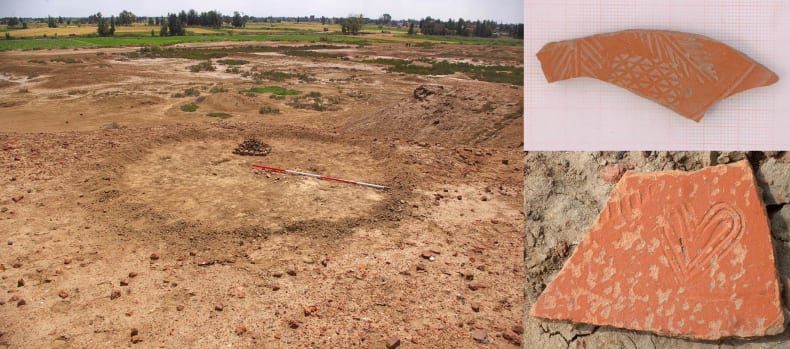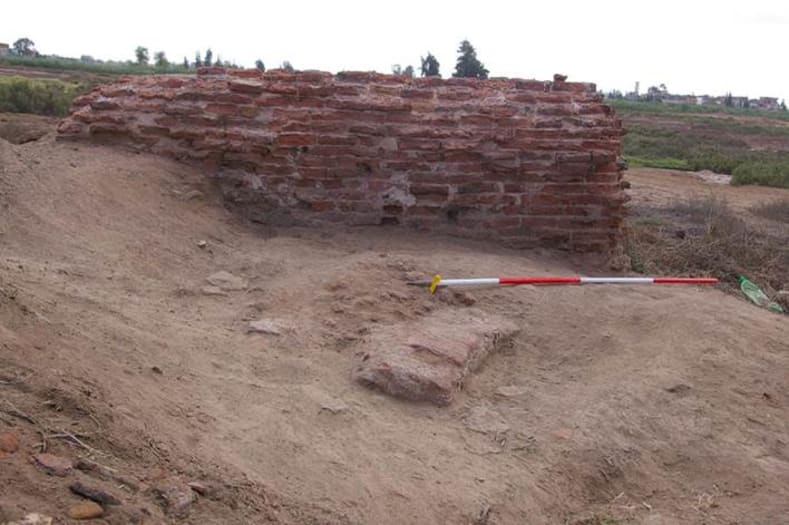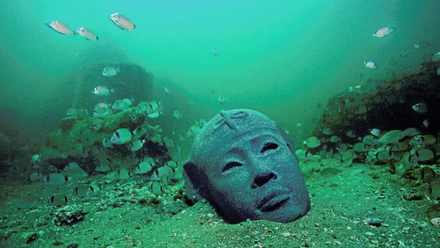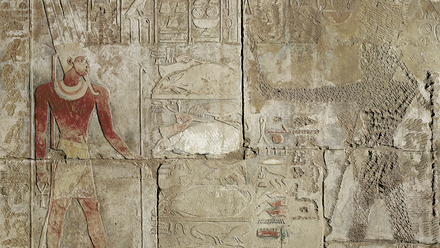Tell Mutubis
A Durham and Mansoura University/EES/MSA mission at Kom el Ahmar, Tell Mutubis in Kafr el Sheikh carried out survey work in 2014 at the Late Roman (4th-7th century AD) mound site. The team undertook a geophysical survey as part of an ongoing programme of work as well as a second intensive pottery and glass survey of the mound and its surrounding flatter areas.
The gradiometer survey covered around a hectare of the site with sample areas chosen on the western side of the mound, on the top and on the flatter area to the south-east. The electrical resistivity survey covered the same areas so that the data could be correlated to create intensive sub-surface imaging of the structures of the mound. The results detected strong linear features to the west of the mound, circular and rectangular structures on the top of the site and possible kiln areas on the lower lying areas.
 Clockwise from left: Pottery sampling circle in south-east sector; Cypriot Red slipware sherd with impressed palm frond; impressed heart on slipware sherd
Clockwise from left: Pottery sampling circle in south-east sector; Cypriot Red slipware sherd with impressed palm frond; impressed heart on slipware sherd
The glass survey confirmed that there were glass kilns at the site manufacturing glass vessels during the Late Roman period and a typology of glass vessels was created for comparison with other sites in the Eastern Mediterranean. The material culture and pottery intense survey divided the areas of the site into grids and at regular intervals a 4m diameter circle was used to sample the distribution and quantities of material on the surface. We recorded differences in the density of material such as fired brick, Egyptian coarseware pottery, fine red slipwares, imported amphorae, burnt limestone, metalwork, glass, mortar and plaster. The aim was to quantify the material and perhaps relate it to the function of the different zones of the site. We identified a kiln area (mostly for glass), some rich buildings with limestone-tiled floors and plastered walls, domestic units, storage areas, large monumental walls at certain parts of the site, and confirmed that the tanks to the east of the mound were once part of a bath-house with a tholos. The pottery, glass and a few corroded coins confirmed that the site was mostly dated to the Roman period and was abandoned soon after the Arab conquest.
 Cleaned bath area with tholos wall (below), tank (above)
Cleaned bath area with tholos wall (below), tank (above)
A short version of this story has also featured at http://www.egyptindependent.com/news/archaeologists-near-discovery-roman-era-kilns-north-egypt



